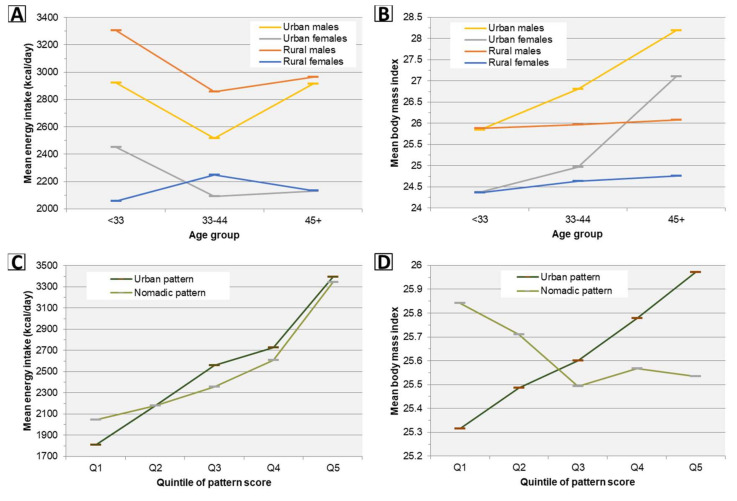Figure 4.
Trends in estimated marginal means of energy intake and body mass index by age and diet pattern scores across subgroups. (A,B) Means are estimated using a regression model in which summer or winter mean energy intake (n = 635) or BMI (n = 334) are predicted using an age group × urbanicity-sex group interaction term adjusted for province; energy models are additionally adjusted for season and a random intercept per person to account for within-person correlation across seasons. Within both urban males and rural males, adjusted energy intake decreases significantly (p < 0.05) from <33 to 33–44 years, and there are no significant differences in linear age trends between any subgroups; see Table 5 for age trends in BMI. (C,D) For each diet pattern, means are estimated using a regression model in which summer or winter mean energy intake (n = 635) or BMI (n = 334) are adjusted for quintile of pattern score, age in years, sex, urbanicity, and province; energy models are additionally adjusted season and a random intercept per person. See Table 9 for trends in energy intake and BMI across quintiles of pattern scores.

